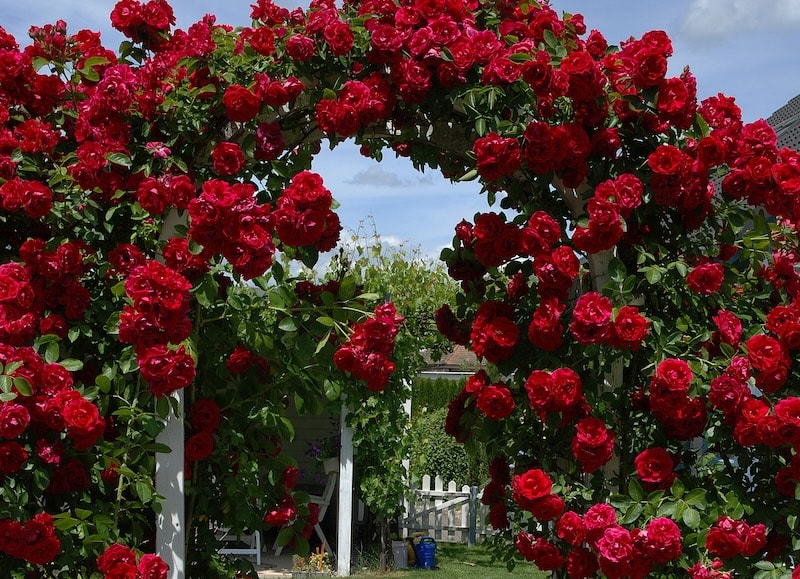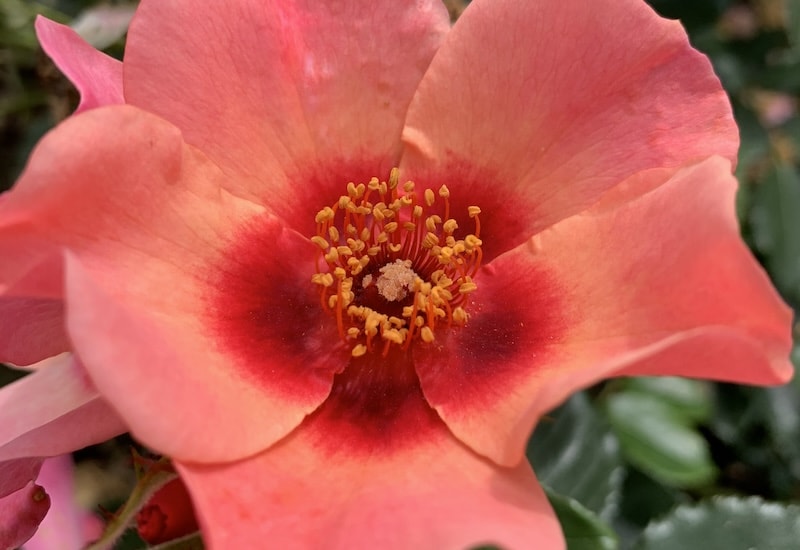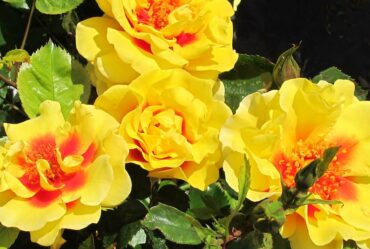Rose plants provide scent, colour and a classic ‘English cottage garden’ aesthetic to summer gardens. Whether you have a sunny arch to cover, a border to fill, or a hedge to plant, there’s a rose to suit your needs. Bare root roses are available from November to March, offering a great value opportunity to fill your beds and borders with your favourite varieties.
Here are some of the most fascinating facts about this traditional shrub, along with expert suggestions to help you choose the best variety for your garden…
Roses through the ages
Many people’s favourite flower, roses have been loved throughout history. Whole books have been dedicated to their use in food, drink, perfume, medicine, design and gardens. And the romantic connotations have often been explored in poetry, prose, art and music. Here are a few of our favourite facts:
- Rose plant fossils found in the USA confirm that roses existed 35 million years ago.
- According to myths, the original rose had no thorns. In fact, Adam and Eve were supposedly responsible for the first thorns, which are said to have increased alongside man’s wickedness.
- The philosopher Confucius (551-479B.C.) recorded that the Chinese Emperor’s library held 600 books about roses.
- The Romans adored roses. They scattered the petals on floors and furniture for perfume and used them to make jellies, wine and puddings. Guests were welcomed by being given rose garlands to wear.
- The Roman emperor Nero once spent the equivalent of £4,500 on roses for a single banquet.
- The crusaders introduced the rose to England and created the first rose-windows in churches.
- The heraldic Tudor Rose was created by combining the rose emblems of Lancaster and York at the end of the War of the Roses.
- When Saladin conquered Jerusalem 1187, his men used rose water to wash and purify the Mosque of Omar.
- Marie Antoinette spent the night before her wedding sleeping on a bed of rose petals.
- In 1812 the output from the French rose perfume industry was worth over 12 million francs.
- In the language of flowers, the rose and its different colours speak volumes.
- More than 80% of land in Zambia is used for producing roses.
- And finally, the world’s oldest living rose is recorded as being 1,000 years old and grows on the walls of the Cathedral of Hildesheim in Germany.
Roses are not only historical shrubs, they’re also perfect for growing in the garden! Choose fertile soil in a sunny spot for the best results and mulch with well rotted manure after planting.
The best climbing roses

Image: Rose ‘Paul’s Scarlet’ from Suttons
Climbing roses provide long-lived summer colour in the garden. Plant these hard-working roses at the base of obelisks, pergolas and sunny walls to transform your outside space with height, scent and beautiful blooms. Here are some of our horticultural team’s favourite climbing roses:
- Rosa ‘Madame Alfred Carriere’. An excellent bendy climbing rose to gracefully curve over a pergola or arch. This old-fashioned favourite holds an RHS Award of Garden Merit and features classic blousy double blooms with a fantastic sweet scent.
- Rose ‘Paul’s Scarlet’. Unusually combining vibrant red flowers with a sweet scent, ‘Paul’s Scarlet’ is a winner for its vigorous growth too. Plant this eye-catching, floriferous variety in pride of place on a walkway or flanking an entryway.
- Rose ‘3-in-1 Patio Climber’. If you can’t choose just one, this clever mix of three bare root climbers intertwine to create a tricolour display of fragrant, double and semi-double blooms. Fill your patio containers with these repeat-flowering climbers and train them against a trellis or fence.
Growing tip: Climbing roses need a trellis or support to attach them to a wall. They don’t have suckers or tendrils like other climbing plants, so they’ll need tying-in to keep them secure in windy weather.
Best shrub roses

Image: Rose ‘Precious Gold’ from Suttons
Shrub roses are open, shrubby plants perfect for planting in the middle of a border or training into a standard. Modern shrub roses often feature repeat flowering and resilience to disease whereas pre-1800 heritage varieties feature classic large, double-petalled blooms and a classic rose scent. You can’t go wrong with these suggestions from our expert team:
- Rose ‘Meteor’. Winner of the prestigious ‘Rose of the Year’ award, ‘Meteor’ changes colour in the sun, becoming an even more fiery red and orange as the light intensifies. As a repeat-flowering variety, the ember-coloured blooms come back with a spectacular encore in September. At only 70cm tall, this variety is best placed at the front of a mixed border.
- Rose ‘Easy Elegance Grandma’s Blessing’. A perfect rose for beginners. This fantastic variety is bred for its low-maintenance, repeat flowering and versatility. The elegant, dusky pink blooms light up the garden all summer long from sturdy 1m tall stems.
- Rose ‘Precious Gold’. This is a great choice for cut flower enthusiasts. Large, double-petalled blooms flower on strong stems with golden yellow petals and a great scent. A tidy shrub rose that stays compact and bushy.
Growing tip: Lightly prune your shrub roses in autumn, after they finish flowering. Remove any diseased branches and stems, and clear crossing branches from the centre to improve airflow through the shrub. Remember to always use clean and sharp equipment when you prune and to move any cuttings into the bonfire.
Best roses for containers

Image: Rose ‘For Your Eyes Only’ from Suttons
Roses suit containers and it’s the best way to appreciate the scent and colour up close. Choosing the right variety is important to make sure they don’t quickly outgrow their pot and turn into an unmanageable tangle. Here are a few container-ready favourites from our horticultural team:
- Rose ‘Cutie Pie’. At only 10cm high, rose ‘Cutie Pie’ is right at home on a patio table in a small decorative pot. This small but mighty rose also makes excellent ground cover in the garden. Enjoy flurries of apple-blossom-like blooms from July through to September from this thorn-free gem.
- Rose ‘For Your Eyes Only’. Many clusters of two-toned open blooms arrive in June, supplying lovely colour and scent until September. The fragrance is best appreciated close up, so fill patio pots with this hard-working favourite. The open flowers are a must-have for wildlife-friendly gardeners.
- Rose standards. One of our compact, specially trained rose bushes instantly brightens and lifts an area with its sophisticated style. Choose the colour you like and plant your bare root standard between November and March, while it’s dormant. Two rose standards are a smart way to flank an entryway or path.
Growing tip: Refresh the compost inside your container roses every year. Remove the top third and replace with a peat-free compost to keep your roses well-fed and happy. Keep watering your containers throughout the growing season.
We hope you feel inspired to grow even more roses in your own garden. Starting with bare roots? Read our list of top ten bare root rose plants for more ideas. And to get the most from your fabulous blooms, check out our best expert advice from top rose-growers.
Lead image: Rose ‘Scented Double White’ from Suttons
Last Updated on January 24, 2024 by Suttons Horticultural Team





